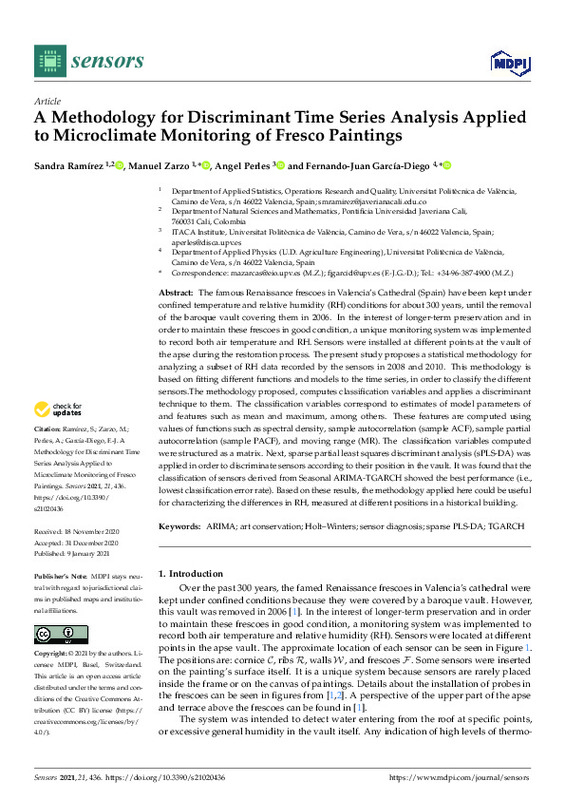JavaScript is disabled for your browser. Some features of this site may not work without it.
Buscar en RiuNet
Listar
Mi cuenta
Estadísticas
Ayuda RiuNet
Admin. UPV
A methodology for discriminant time series analysis applied to microclimate monitoring of fresco paintings
Mostrar el registro completo del ítem
Ramírez, S.; Zarzo Castelló, M.; Perles, A.; García Diego, FJ. (2021). A methodology for discriminant time series analysis applied to microclimate monitoring of fresco paintings. Sensors. 21(2):1-28. https://doi.org/10.3390/s21020436
Por favor, use este identificador para citar o enlazar este ítem: http://hdl.handle.net/10251/182578
Ficheros en el ítem
Metadatos del ítem
| Título: | A methodology for discriminant time series analysis applied to microclimate monitoring of fresco paintings | |
| Autor: | Ramírez, Sandra | |
| Entidad UPV: |
|
|
| Fecha difusión: |
|
|
| Resumen: |
[EN] The famous Renaissance frescoes in Valencia¿s Cathedral (Spain) have been kept under confined temperature and relative humidity (RH) conditions for about 300 years, until the removal of the baroque vault covering them, ...[+]
|
|
| Palabras clave: |
|
|
| Derechos de uso: | Reconocimiento (by) | |
| Fuente: |
|
|
| DOI: |
|
|
| Editorial: |
|
|
| Versión del editor: | https://doi.org/10.3390/s21020436 | |
| Código del Proyecto: |
|
|
| Agradecimientos: |
This project received funding from the European Union's Horizon 2020 research and innovation programme under grant agreement No. 814624. Furthermore, the project was partially supported by Instituto Colombiano de Credito ...[+]
|
|
| Tipo: |
|









